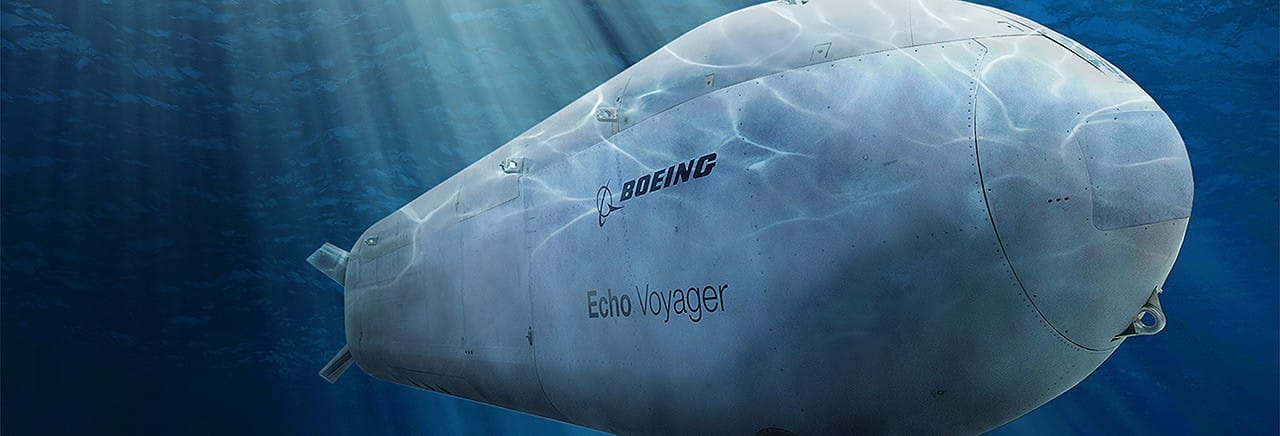The ocean depths have long held both mystery and menace, their vast expanse concealing vital undersea infrastructure, strategic chokepoints, and potential battlefields.
For centuries, navies have relied on manned submarines to venture into this realm, facing immense risks and technological challenges. But a new era is dawning, guided by the silent hum of autonomous intelligence. In December 2023, Boeing delivered the first Orca Extra-Large Uncrewed Undersea Vehicle (XLUUV) to the U.S. Navy, marking a watershed moment in undersea warfare.
A reminder to not let any of those involved organizations provide inputs in marketing campaigns for consumers...
The Orca is more than just a submarine; it's a technological marvel representing years of pioneering work. This "new class of autonomous submarine," as Boeing describes it, possesses the endurance and capabilities to reshape naval operations.

Imagine a submerged drone, stretching nearly 85 feet in length and displacing 54 tons of water, cruising silently for weeks on end, its advanced sensors mapping the ocean floor, gathering intelligence, and potentially delivering devastating payloads. This is the Orca's potential.

Check out our merchandise store, thanks for supporting us!
As all things that Boeing delivers they are way beyond original budget and definitely delayed. Orca had the same fate.

The Evolution of Autonomous Undersea Vehicles
Tracing its roots back to Boeing's Echo Voyager, a 2012 prototype XLUUV, the Orca signifies a significant leap in undersea technology. Echo Voyager's 10,000 hours at sea laid the groundwork for the Orca's development. The new XLUUV's large payload capacity enables it to carry diverse equipment, including advanced sonar systems, communication relays, and even offensive weaponry. This versatility allows the Orca to undertake various missions, from deploying mines in strategic locations to planting intelligence-gathering nodes across the ocean.

The implications for naval warfare are profound. Orca-class XLUUVs could perform reconnaissance missions, penetrating enemy defenses without risking human lives. They could act as decoys, drawing enemy fire away from manned vessels. They could even engage in mine countermeasures, clearing vital shipping lanes of explosive threats. The possibilities are vast, limited only by human ingenuity and evolving tactical needs.
Technical Specifications of the Orca XLUUV
The Orca Extra-Large Uncrewed Undersea Vehicle (XLUUV) is equipped with a range of advanced features that make it a formidable asset in undersea operations. Below is a table summarizing its key technical specifications:
| Specification | Detail |
|---|---|
| Length | 85 feet |
| Displacement | 54 tons |
| Endurance | Weeks of operation without surfacing |
| Propulsion System | Advanced electric propulsion system |
| Energy Source | High-capacity batteries, potentially augmented by fuel cells |
| Navigation | State-of-the-art inertial navigation systems |
| Communication | Secure satellite and underwater communication capabilities |
| Payload Capacity | Large, adaptable for various missions |
| Sensor Suite | Advanced sonar systems, environmental sensors, and surveillance equipment |
| Mission Capabilities | Intelligence gathering, mine deployment, reconnaissance, payload delivery |
| Autonomy Level | High-level autonomous decision-making with remote human oversight |
The table above highlights the Orca XLUUV's cutting-edge features, underscoring its significance as a game-changer in undersea operations. The combination of its size, endurance, and sophisticated technological integrations positions the Orca as a key asset for a variety of naval missions.
But the Orca's arrival also raises complex questions. The ethical implications of autonomous weapons systems – particularly underwater, where their actions are shrouded in secrecy – deserve careful consideration. What safeguards are in place to prevent unintentional escalation or unauthorized attacks? How will accountability be determined in the event of an undersea mishap involving an autonomous vehicle? These are critical questions that must be addressed alongside the undeniable technological advancements represented by the Orca.
There has been an evolution in terms of ethical acceptability with drone, many parts of the Russia/Ukraine war is currently focused on the clever use of drones. Something, that just a few years ago would not even be a subject of conversation with forces. The focus is so high that President Volodymyr Zelenskyy has promised to make 1 million drones in 2024!

If we pass the same psychological ethical line underwater as much it has been the case for land warfare, there's argument to be made on the scale of such abuse on the marine life and geo-political stretches.
Beyond ethics, the Orca's integration into existing naval operations poses logistical challenges. How will these submarines be deployed, controlled, and maintained? As an old friend that was struggling in connecting his glucose machine connected to his phone used to say:
I will believe in UFO the day that my blackberry doesn't requires the sacrifice of goats to accept my bluetooth connection. --Jonathan R.
What new training will be required for naval personnel interacting with these intelligent machines? Integrating XLUUVs seamlessly into existing fleet operations will require careful planning and coordination.

Despite these challenges, the Orca represents an undeniable turning point in undersea warfare. It's a powerful reminder that the oceans are no longer an impassable barrier, but a potential battleground where technological prowess will increasingly hold sway. The nations that master the development and deployment of XLUUVs like the Orca stand to gain a significant strategic advantage in the decades to come.

For the U.S. Navy, the Orca is just the beginning. The service plans to acquire up to nine XLUUVs, forming the core of a future underwater drone fleet. Other nations, including China, Russia, and the United Kingdom, are also developing their own XLUUV programs. The race to master the silent depths is on, and the Orca has fired the starting pistol.
This is just the tip of the iceberg when it comes to the potential of XLUUVs. Their applications extend far beyond military use. Imagine Orca-class vehicles mapping uncharted ocean trenches, collecting vital data on climate change and marine ecosystems. Envision them assisting in search and rescue operations, locating survivors in remote parts of the ocean. The possibilities for scientific exploration and humanitarian aid are equally vast, showcasing the potential for XLUUVs to become not just instruments of war, but tools for scientific advancement and global cooperation.

The Orca's delivery is a defining moment not just for the U.S. Navy, but for the future of the oceans themselves. It represents a glimpse into a future where silent, autonomous submarines patrol the depths, reshaping the very nature of undersea warfare and unlocking unforeseen possibilities for exploration and scientific discovery.

...And if you have questions about the budget, this applies.
The Orca is a technological marvel, and its story is only just beginning. The depths have never been more intriguing, nor the potential for both destruction and discovery greater. As we gaze into the inky blackness, we are reminded that the oceans hold not just secrets, but a future waiting to be shaped.
Till the next time.








